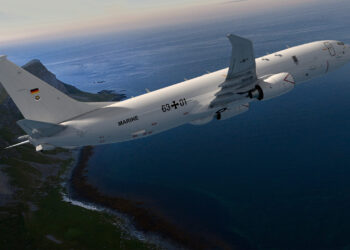US Navy,
The Navy’s newest attack submarine New Hampshire (SSN 778) will be commissioned Saturday, Oct. 25, 2008, during a 10 a.m. EDT ceremony at the Portsmouth Naval Shipyard in Kittery, Maine.
Sen. Judd Gregg will deliver the ceremony’s principal address. The ship’s sponsor, Cheryl McGuinness of Portsmouth, N.H., is the widow of Lt. Cmdr. Thomas McGuinness, a veteran Navy pilot and co-pilot of American Airlines Flight 11 which was flown into the North Tower of the World Trade Center by terrorists on Sept. 11, 2001. The ceremony will be highlighted by a time-honored Navy tradition when McGuinness gives the order to “man our ship and bring her to life!”
The fifth submarine of the Virginia-class, New Hampshire was delivered eight months early thanks to the Navy’s on-going cost-reduction initiatives. This will mark the first time since 1996 that the Navy has commissioned two submarines of the same class in the same year — USS North Carolina was commissioned in May.
Through their unique capabilities of stealth and endurance, Virginia-class submarines directly enable the Maritime Strategy Core Capabilities of forward presence, deterrence, sea control, power projection, and maritime security. Equally adept at operating in the world’s shallow littoral regions and deep waters, New Hampshire will significantly contribute to the mission areas of anti-submarine warfare; anti-surface warfare; special operations forces; strike; intelligence, surveillance, and reconnaissance; irregular warfare; and mine warfare.
Cmdr. Mike Stevens, a native of Tacoma, Wash., will become the ship’s first commanding officer, leading a crew of approximately 134 officers and enlisted personnel.
The 7,800-ton New Hampshire was built under a unique teaming arrangement between General Dynamics Electric Boat and Northrop Grumman Shipbuilding. New Hampshire is 337 feet in length, has a beam of 34 feet, and can operate at depths greater than 800 feet and at speeds exceeding 25 knots submerged. New Hampshire is also designed with a reactor plant which will not require refueling during the planned life of the ship, reducing lifecycle costs while increasing operational availability.









